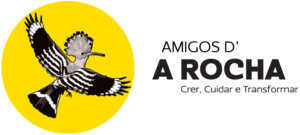
Newsletter December 2020



Welcome to our December Newsletter
Dear Friends
This is the final monthly Newsletter for the very difficult year of 2020.
Earlier this year we asked you for your financial help in supporting A Rocha Portugal and the Friends of A Rocha Portugal to enable us to continue with the important work carried out by the organisation in such troubled times. The response was truly amazing and thanks to that support we were able to make sure the staff continued to get their salaries and the Centre ‘Cruzinha’ continued to run. Thank You.
Due to the rules and requirements for Covid 19 visitor safety, visitor numbers and therefore income has been well down and we do not see this improving in the near future, our hands are tied and safety is paramount.
Looking ahead to the New Year 2021 we are hoping for positive news in battling this virus and being able eventually to return to our ‘normal’ working practices and to build a positive future for A Rocha Portugal and the Friends of A Rocha. If only there was a magic wand to enable us to accept more guests, new students and be completely self-sufficient, but we know due to restrictions this is not going to be possible in the near future. We realize that we are going to need financial help on a regular basis to help us through 2021 and the difficult times ahead. If we can secure this help it will enable us to continue working without having to worry each month if income is enough to cover our costs.
We are therefore asking if you would consider supporting us on a regular monthly basis over the next 12 months, starting in January 2021 to help us in these continued troubled times. Below is a link, to give a monthly amount over 12 months, all donations will be gratefully received.
THANK YOU FRIENDS for your continued support.



I would like to wish you all a Healthy, Happy and Peaceful Christmas and Holiday Season and a New Year full of Hope and Joy.
Helen Rodda
S
N
A
P
SHOT

Alvor

Age: 436 bC
Town (since 14th April 1988)
Population: 6154 (Census 2011)
Area: 15,25 Km2
Alvor is a fishing and maritime village, within the area of Portimão Council; it is limited by Portimão in the East, Mexilhoeira Grande in the North and Ria de Alvor in the South and West. Initially it was a small fisherman’s village, dependent on the sea, nowadays it is an important touristic town.
The human presence in Alvor is ancient, it is thought that a great Carthaginian general, Aníbal Barca, found it in 416 BC, when it was a small commercial port and he named it after himself, Portus Hannibalis.
In 716, the place was conquered by the Moors, who named it Albur (wasteland), they even built a castle. The first successful attempt to conquer Alvor was made by D. Sancho I, King of Portugal, on the 3rd of June 1189, he had the help of the Crusaders, but the place was taken by the Moors again two years later, it was finally reconquered in 1250. Alvor Castle was rebuilt in 1300 by D. Dinis, King of Portugal and used for 500 years as a military fortress to defend the coast from pirates and corsairs, until the big earthquake of 1755, when it was destroyed. Today there are a few remains.
Alvor will always relate to John II, King of Portugal, as it is where he died, in a small mansion, in the Rua do Poço and was elevated to town status, by him before he died, on 25th of February of 1495.
Economically Alvor depends on tourism, essentially, because of the beaches and the beautiful landscapes, but traditional fishing and some agriculture are still important activities in the area. The natural patrimony is also important, the dunes are a habitat for some important bird species.
IFO’s – Identified Flying Objects…
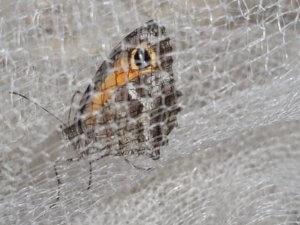
Southern Gatekeeper (Pyronia cecilia, Vallantin, 1894)

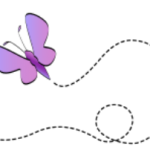
Morphology: It is a medium butterfly from the Nymphalidae Family, with a wingspan of 28 to 34 mm; males are smaller than females. The upper side of the wings are orange with a brown marginal band, the apex of the forewings have a dark “eye” with 2 white dots, the fore underwing is similar to the upper wing, the hind underwing is marbled brown resembling an “old” leaf, with a paler band with an “Y” shape. Two generations per year; it flies from April to September.
Habitat: hot, dry grasslands or scrublands; often takes shade from the heat of the day below bushes or rocky faces.
Distribution: North Africa and Mediterranean Region, from Portugal to Turkey. In Portugal it is common all over the country.
Notes: The caterpillar feeds on grasses, like Brachypodium sp, Poa sp and Deschampsia sp. Very similar to the Gatekeeper (Pyronia tithonus), this last one is more abundant in the north areas.
Tweet… Tweet…


Black-tailed Godwit (Limosa limosa, Linnaeus, 1758)
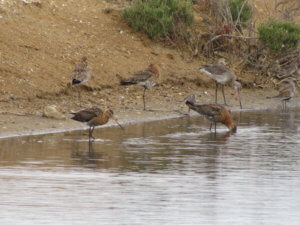
Identification: It’s a medium size wader from the Scolopacidae Family; it measures between 37 to 42cm (from bill to tail). The bill, neck and legs are long, it has a slim appearance; the bill is straight or slightly curved. Males have two different plumages, in summer more extensive brighter rufous plumage (neck and breast), belly whitish and barred flanks; in winter there is no rufous colour. The most distinctive characteristics are the square white rump, the black bar tail and the white wing bar visible in flight.
Habitat and Ecology: beaches and estuaries, sometimes in inland lakes; it prefers shallow waters like swamps, flooded fields and marshlands. The diet consists of small invertebrates, mainly insects, molluscs, crustaceans, eggs of fishes and amphibians.
Distribution: All biogeographic regions except the American Continent. Breeds in medium latitude in ocean and continental areas, usually in temperate and boreal areas. The Northwest European population winters in West Africa, south of Sahara, some spend the winter along the Atlantic coast and Mediterranean basin, the Northeast European population winters in East and Central Africa. This species doesn’t breed in Portugal, it is a winter visitor and a passage migrant.
Threats: Near Threatened (NT) in the International Union for Conservation of Nature (IUCN) red list. The European populations have suffered a marked decline in the last decade, mainly to habitat destruction, urban and touristic pressure on coastal areas and water pollution. During the pre-nuptial migration (January and February) you can see around 50 000 birds in Portugal.
DID YOU KNOW?
-
Tiago Guarda Campos, 24 years old, Belgian/Portuguese. I studied 3 years at ULB University in Brussels in biology. In 2017, I went on a
 trip across South America for 6 months. I came here as a volunteer for 3months. I work on the garden, help with a micro plastics study; I help Paula in her moth work. I really enjoy the tranquillity here, the beautiful garden and the species we can observe around. I love also the people from the A Rocha family, everybody is so nice and kind, it is relaxing. The food is also very good!
trip across South America for 6 months. I came here as a volunteer for 3months. I work on the garden, help with a micro plastics study; I help Paula in her moth work. I really enjoy the tranquillity here, the beautiful garden and the species we can observe around. I love also the people from the A Rocha family, everybody is so nice and kind, it is relaxing. The food is also very good!
- On the 7th of November A Rocha took part on the Walk & Art Fest organized by Almargem in Barão de São João! Was a lovely day, even if we didn’t manage to see many birds.
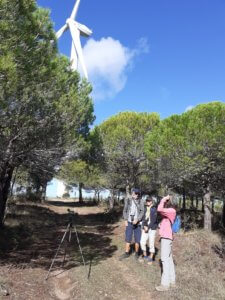
- On the 27th of November A Rocha organized a beach cleaning in Praia da Luz! Was possible to collect all sorts of rubbish! Thanks for your help!
-
On the 15th of November Jasper and Tayler, the new directors of A Rocha Centre left for visiting their home town and to collect support for continuing their work here. We wish them a pleasant and successful time in USA together with their families and hope they return safely.
-
November is the end of autumn and it almost feels like winter, most part of our winter birds arrived. This month at our ringing station we caught: Robin (Erithacus rubecula), Blackcap (Sylvia atricapilla), Chiffchaff (Phylloscopus collybita), Sardinian Warbler (Sylvia melanocephala), Greenfinch (Carduelis chloris), Blackbird (Turdus merula), Iberian Magpie (Cyanopica cookie), Kingfisher (Alcedo athis), Song Trush (Turdus philomellus), Chaffinch (Fringila coelebs), Waxbill (Estrilda astrild), Black Redsart (Phoenicurus ochruros), Nightingale (Luscinia megarhynchos), Grey Wagtail (Motacila cinerea) and Common Firecrest (Regulus ignicapila).
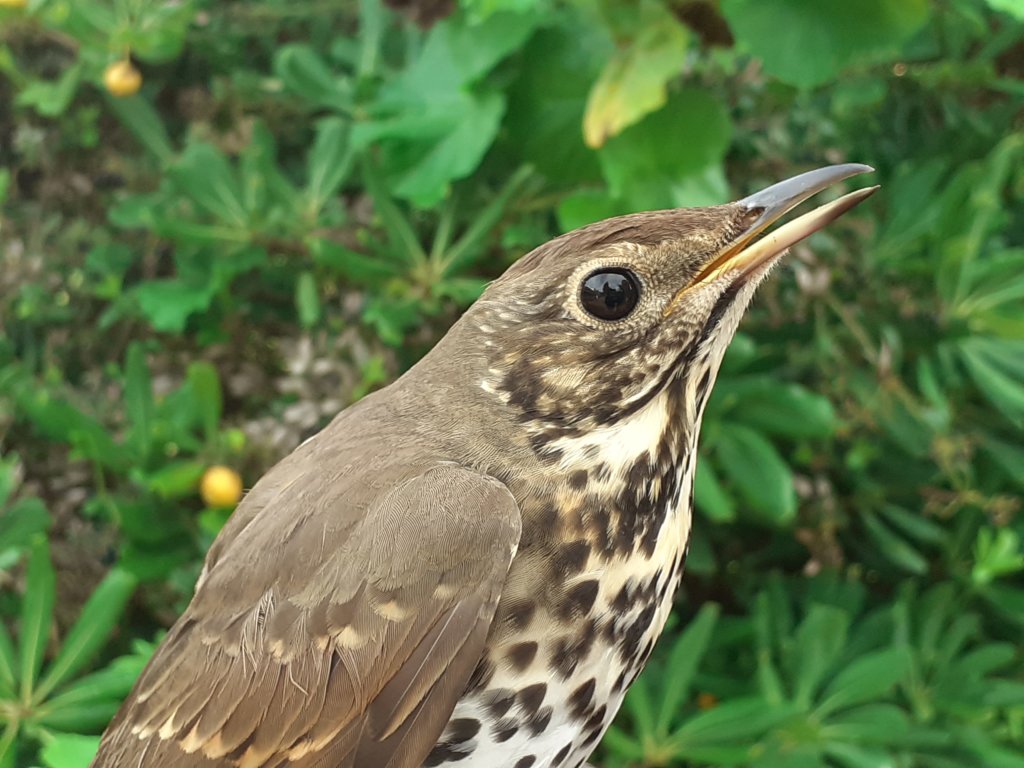
Song Trush (Turdus philomellus)
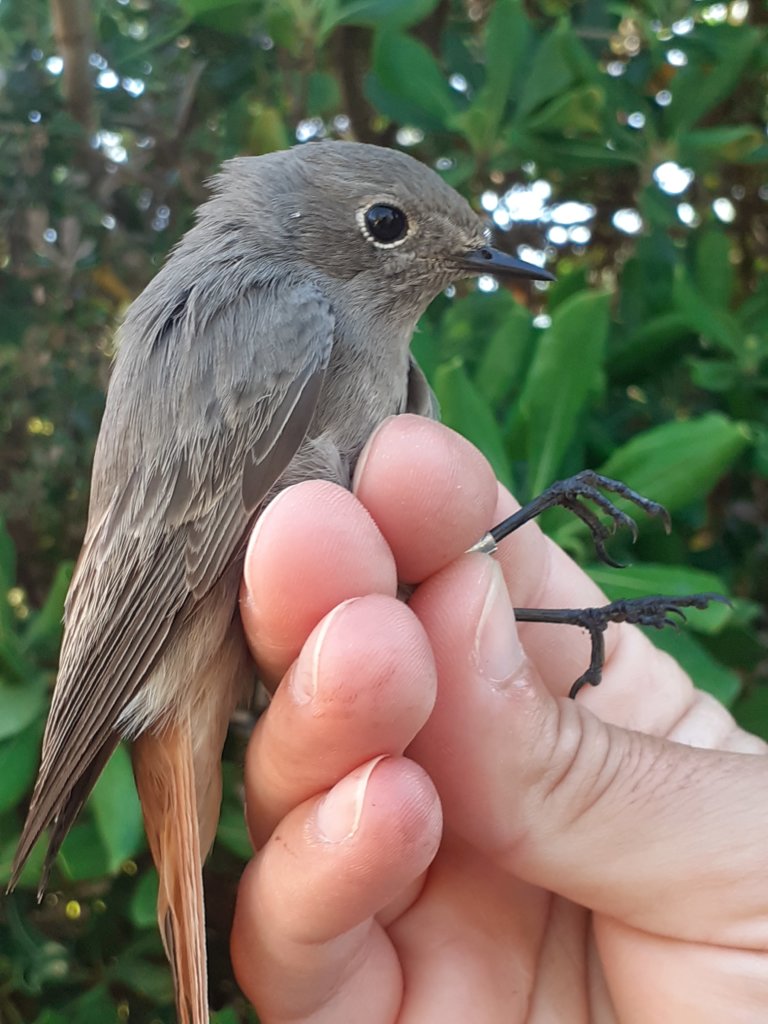
Black Redstart (Phoenicurus ochruros)
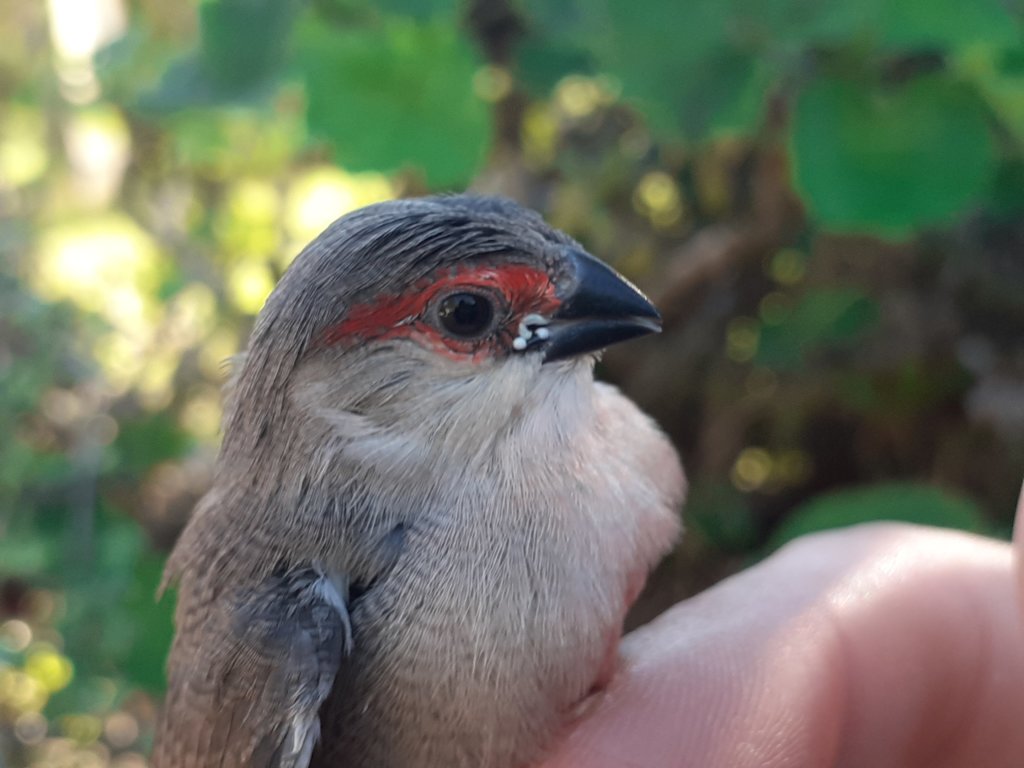
Juvenile Waxbill (Estrilda astrild)
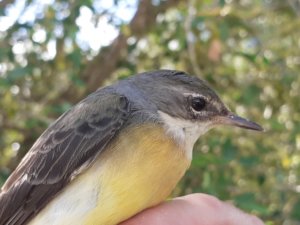
Grey Wagtail (Motacilla cinerea)
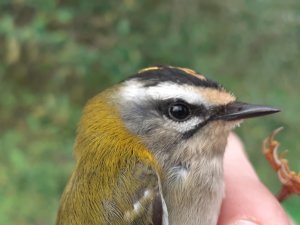
Common Firecrest (Regulus ignicapila)
PLASTIC FREE FEBRUARY
Plastic is a wonderful material, it is resistant, malleable, durable – and cheap compared with other materials on the market. Over time, it has become the most used material, especially with regard to home and personal items. Since 1950, more than a tonne of plastic has been produced for every person alive today*1. With consumption comes waste, and here, the characteristics of plastics have a negative effect. It is very resistant and slow to degrade. It has become the most discarded and dumped material in our rivers, soil and seas. More than 150 million tonnes of plastic has already entered the oceans and another 11 million tonnes will end up there each future year, with almost 1,000 marine species known to be contaminated by the waste*2. 
Each year one hundred thousand marine mammals and millions of birds, fish and turtles lose their lives because they inadvertently consume or are injured by plastic and microplastic. Humans too are being threatened by the harm of microplastics found in different food products such as salt, fish and seafood. Scientists who examined tissue samples taken from lungs, liver, spleen and kidneys found traces of plastics contamination in all of them. This included polyethylene terephthalate, which is used in products such as plastic drinks bottles, as well as polyethylene, which is used to make plastic bags*3. 
Our governments, responsible for laws and regulation, are already making an effort to stop this problem but we, both individually and in our community need to do our part too.
*1/*2 Source: The Ellen MacArthur Foundation and WWF, environmental charities that produced the report
*3 Source: Varun Kelkar, Illinois’ University
A Rocha’s project
A Rocha is launching a project called Plastic Free February and its purpose is to reduce the amount of plastics we use. We will do this, as much as we are able, by monitoring and reducing our personal use of plastic at home. We know it will be a difficult task but we are hoping that everyone can share, not only the difficulties you faced but also the solutions and tips you found both practical and feasible. We want to use our blog, Facebook and Instagram pages to share both.
Here are some suggestions:
To be able to know if we are reducing the use of plastic, we first need to know how much plastic we are currently using. For this we need to select and separate our plastic rubbish from other rubbish. Then we need to measure the plastic rubbish we have used during the first 28 days of January. This can be done in three ways, you can choose the one easiest for you;
- By weighing our plastic rubbish (bags)
- Or if we don’t have a scale, registering the volume (how many litres does your plastic rubbish bag hold) multiply by the number of bags we put in the rubbish.
- Use a chart (we have made one available to download), put it next to the bin or on your fridge and register how many plastics items you throw out.
In February we plan to do the same exercise using the same measurement (kgs or litres or chart) that we used in January. You may use any other method that is easier for you.
Tips for starting:
- Look careful at labels, some of the personal products like body creams and gels are full of microplastic. Try to avoid them!
- Use your own cloth bags when buying your vegetables and bread. Nowadays you can buy vegetables without using a plastic bag, weighing them at the checkout and using your cloth bag to take them home.
- Avoid double packaging! Biscuits, cookies and some other products come in small bags. Avoid those!
- Try to buy a detergent that can clean windows, counters and ovens, instead of buy 3 different ones. Also for bathroom products.
- Every time you can, buy products in a glass bottle instead of in a plastic bottle
- Research on-line for other tips.
In general
Reduce your consumption, Re-use what you already have, Refuse to accept what you don’t want, Recycle what you can’t use anymore
Please join us, even if you are not registering how much you reduce.
Do send us small videos with ideas, tips, solutions that you found and also your difficulties. We want to share those on our blog. You can make the films in English or Portuguese.
Isabel Soares


For a long time I have been hearing about invasive species! The Covid 19 quarantine enabled me to take part in some of the on-line seminars about invasive species, and do you know what, they are very invasive and they are everywhere! Now, when I drive or walk around anywhere, I can’t stop looking at plants, invasive plants that grow as if they belong here… and I just happen to know a couple of species! 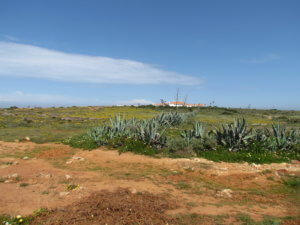 Some are really beautiful plants! I was doing a birdwatching tour in Sagres, inside the Natural Park, and I saw invasive plant species, along the EN 125 between Portimão and Lagos, on the Alvor Estuary, on the way to Monchique, even in Cruzinha garden…. I decided that maybe I can do something even if it is something small, even if it’s just sharing this problem! Invasive species are one of the main causes for our local species extinction and for the decrease of biodiversity! Millions are spent every year to eradicate invasive species! They are not just bad for ecosystems but some can be bad for human health! (Acacia) See article below “Biodiversity”
Some are really beautiful plants! I was doing a birdwatching tour in Sagres, inside the Natural Park, and I saw invasive plant species, along the EN 125 between Portimão and Lagos, on the Alvor Estuary, on the way to Monchique, even in Cruzinha garden…. I decided that maybe I can do something even if it is something small, even if it’s just sharing this problem! Invasive species are one of the main causes for our local species extinction and for the decrease of biodiversity! Millions are spent every year to eradicate invasive species! They are not just bad for ecosystems but some can be bad for human health! (Acacia) See article below “Biodiversity”
Ponta da Atalaia, Sagres
Check the website “invasive species” for more information here
Filipa
Deer’s part 2
Family: Cervidae
The Cervidae Family includes the ungulates ruminants, like the red deer and the reindeer; the main characteristic, is the existence of antlers instead of horns. The antlers are ossified structures which grow every year, generally in males. Deer’s are herbivorous with a specific diet, their stomach isn’t specialized, and they can’t digest fibrous plants, like grass, feeding mainly of sprouts, leaves, fruits and lichens. Deer’s are not domesticated animals and through Human history they played an important role as a hunted animal and food source.
In Portugal it is possible to find 3 different species of deer: the red deer, the roe deer and the fallow deer.
Roe Deer (Capreolus capreolus)
Distribution: Palearctic region of the Eurasian continent, except the Mediterranean Islands: Europe, Asia Minor and around the Caspian Sea
Habitat: wide variety of habitats, leafy woodlands, conifer woodlands, Mediterranean woodlands and farmlands.
Life span: 8 years (but can reach 14) 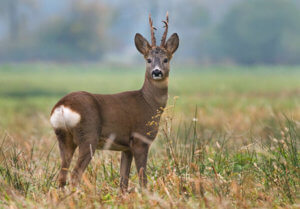
The Roe Deer (Capreolus capreolus) is the smallest deer in Europe and the most common one. The weight can be between 18 to 60 kg and the length between 95 and 145 cm (the populations of Iberian Peninsula are generally smaller and slimmer). The hind limbs are taller than the fore limbs, being adapted to jump; the muzzle far end is dark, the lips and chin white, the ears are big, the rump patch is white, the tail is short and primitive. The sexual dimorphism is not well marked, the main differences are the shape of the rump patch, like a kidney in males and like a heart in females, and the presence of antlers in males. The antlers are short and pointed, normally with 2 or three points; fall in Autumn but start re growing immediately and are completely grown in Spring. The hair colouration is different depending on the season, brown-reddish and short in the summer and long brown-grey in winter. The juveniles have white spots in the back that vanish with time.
 The breeding season happens earlier than in other deer species, in July/August, this is due to an evolutive adaptation of the females, the embryonic diapause or suspended gestation that causes a delayed implantation; the embryo stays “a sleep” for around 5 months and starts developing in January, the females give birth in the end of May/June, after a 10-month gestation period, when the food availability is high. Males are highly territorial, defending their territory from other males, especially during breeding season. Females form small familiar groups with their young’s and sometimes a male, normally female territories are smaller than the male’s ones; the male’s territory can have more than a group of females.
The breeding season happens earlier than in other deer species, in July/August, this is due to an evolutive adaptation of the females, the embryonic diapause or suspended gestation that causes a delayed implantation; the embryo stays “a sleep” for around 5 months and starts developing in January, the females give birth in the end of May/June, after a 10-month gestation period, when the food availability is high. Males are highly territorial, defending their territory from other males, especially during breeding season. Females form small familiar groups with their young’s and sometimes a male, normally female territories are smaller than the male’s ones; the male’s territory can have more than a group of females.
The Roe Deer is a generalist herbivorous and can feed of different kinds and all parts of plants (from the route to the flowers); it is adapt to consume low fibre and rich carbo hydrate vegetal matter, which makes digestion easy and also plants with high levels of tannins, which make it possible to survive in native woodlands. The water requirements are also low and finds its water needs from the plants that eats.
Usually it is active at sun rise and at dawn; it is shy and disappears fast between the trees, the reason why it is named the “elf of the forest”. This species is also famous worldwide from the children’s cartoon “Bambi”.
In Portugal, the Roe Deer was extinct in the beginning of the XX century, only appearing in the North coming from Spanish populations. Nowadays the Iberian population is increasing and expanding, mainly due to farmland abandonment and rural exodus.
POPPED UP
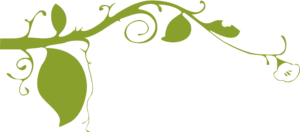
Family: Plumbaginaceae
Identification: It is an evergreen fleshy shrub, up to 2 metres in height (often less, around 1 metre height), stems very branched. The leaves are oblong or spoon shaped, fleshy, covered with white scales and silver-blue-green colour. The flowers are small, bright pink; it flowers from March to November.
Habitat and distribution: salty grounds, like wastelands, coastal sands, marshlands and saltpans hedges. Occurs in Iberian Peninsula and North Africa; eastwards to France, Italy, Sicily and Crete. In Portugal only it is present in the Algarve and Low Alentejo.
Notes: The native range of LImoniastrum is uncertain, some consider it as an introduced species in the Iberian Peninsula and probably native from the eastern Mediterranean. In 1993 it was first registered in Islas Canarias; it is considered in some areas to have an invasive behaviour. Some studies proved that this species is good to remove Cd (cadmium) and Pb (lead) from polluted sites.

Limoniastrum monopetalum (L.) Boiss.
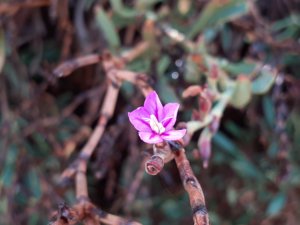
DATES TO REMEMBER

1st December – Restoration of Independence/Public Holiday
3rd, 10th and 17th – Cruzinha Bird ringing display & Moth Talk (10 am to 12 am). Book here
8th December – Day of the Immaculate Conceição/ Religious holiday
11th December – Day of the city of Portimão/ Local Holiday
25th December – Christmas/ Public Holiday
Cruzinha is closed from 21st of December to 4th of January; on Thursday 24th December and 31st December 2020, no Open Day
Thank you for supporting the Friends of A Rocha Portugal

Dr Roy Rodrigues
Av. Do Brasil, Qta das Palmeiras, Lt P2, R/c A, 8500-299 Portimão
(+351) 282180683
royaldente@gmail.com

Sítio da Amoreira, Lote 12,
Alvor, 8500-045 Portimão
(+351) 282412562/ 925433047
www.transfair.com.pt
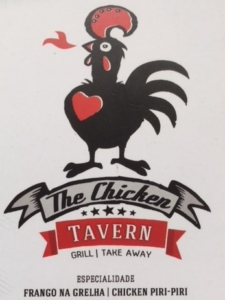
Urbanização Mar e Serra n° 47, Alvor
8500 – 783 Portimão
(+351) 911597735
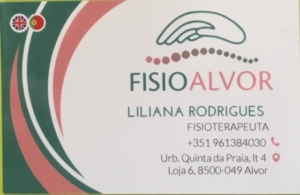
Physiotherapy, Massages (relaxation, sports, therapeutic)
Other therapies
Beauty (manicure, pedicure, hair removal, facials)
Open Monday to Friday
Thought of the month 
“It’s the possibility of having a dream come true that makes life interesting.”
― Paulo Coelho (1947 – Brazilian Author and Novelist)

LETS BE GREEN – LETS BE GREEN – LETS BE GREEN 
We live in a consumer society with things surrounding us in a way, that makes us consume more and more, even things we don’t really need. The markets are arranged upside down, the new products don’t appear to fulfil our ‘needs’ and lead us to create new’ needs’. We have to become aware of what is really essential to us and as consumers be aware of the consequences of our choices.
- Transport, especially the transport for goods, they consume 25% of the energy and are responsible for 25% of the carbon dioxide emissions
- Around 30% of all the plastic produced is for packing: since 1960 the plastic waste for packing increased 200%
- Most part of plastic is made from petrol and other non-renewable fossil fuel
- Not all the plastic can be recycled and even the biodegradable plastic can take more than 100 years to complete the biodegradable process
- The paint used to print on plastic bags is made of cadmium, a heavy toxic metal
- For producing 1 kg of meat 16 kg of cereals and 19 000 litres of water are needed. Cattle breeding requires a big area and deforestation has major consequences.
- A washing machine can use 24 litres of hot water on a single wash (the same as 4 showers)
LETS BE GREEN – LETS BE GREEN – LETS BE GREEN
Biodiversity in Cruzinhas Garden
The Garden at Cruzinha was developed around 35 years ago, when A Rocha Portugal started. At the time the aim was to recreate the different habitats which were found in the area, mainly native plants were used; although, as a house garden some exotic or alien species were also used. Some of these species are nowadays considered invasive (see Newsletter February 2019 – Invasive Species). 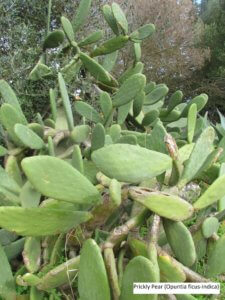
For 6 weeks, two Portuguese students were doing an internship at A Rocha; they located and identified the exotic plants species in the garden, and began to use efficient techniques for their removal. The students also looked at the native species of the Garden, recolonization, with an aim to increase biodiversity for insects, birds and native wildlife.
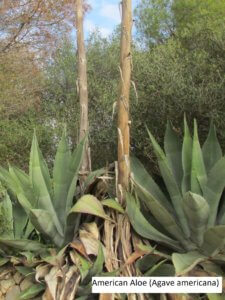 Five species were found and listed as invasive plant species in Portugal: Bermuda Buttercup (Oxalis pes-caprae) (See Newsletter December 2018, Popped…up), Common Lantana (Lantana camara), False Acacia (Robinia pseudoacacia), American Aloe (Agave americana) and Prickly Pear (Opuntia ficus-indica). All these species are so common in the local environment, that some of us may think they are native. Exotic species were also found, that aren’t considered invasive plant species in Portugal, although they are considered invasive in some other parts of the world, or behave as invasive in the garden: Plume Asparagus (Asparagus densiflorus/sprengeri), Japanese Pittosporum (Pittosporum tobira), River Red Gum (Eucalyptus camaldulensis), Bear’s Breeches (Acanthus mollis) and Canary Palm (Phoenix canariensis).
Five species were found and listed as invasive plant species in Portugal: Bermuda Buttercup (Oxalis pes-caprae) (See Newsletter December 2018, Popped…up), Common Lantana (Lantana camara), False Acacia (Robinia pseudoacacia), American Aloe (Agave americana) and Prickly Pear (Opuntia ficus-indica). All these species are so common in the local environment, that some of us may think they are native. Exotic species were also found, that aren’t considered invasive plant species in Portugal, although they are considered invasive in some other parts of the world, or behave as invasive in the garden: Plume Asparagus (Asparagus densiflorus/sprengeri), Japanese Pittosporum (Pittosporum tobira), River Red Gum (Eucalyptus camaldulensis), Bear’s Breeches (Acanthus mollis) and Canary Palm (Phoenix canariensis).
The removal of these plants are considered to be difficult, some have already been cut but have re-grown, like the False Acacia and the River Red Gum; others have grown from the seeds left in the soil, like the Canary Palm, the Plume Asparagus and the Japanese Pittosporum.
Maybe it is a way to say, choose really carefully the plants for your garden!

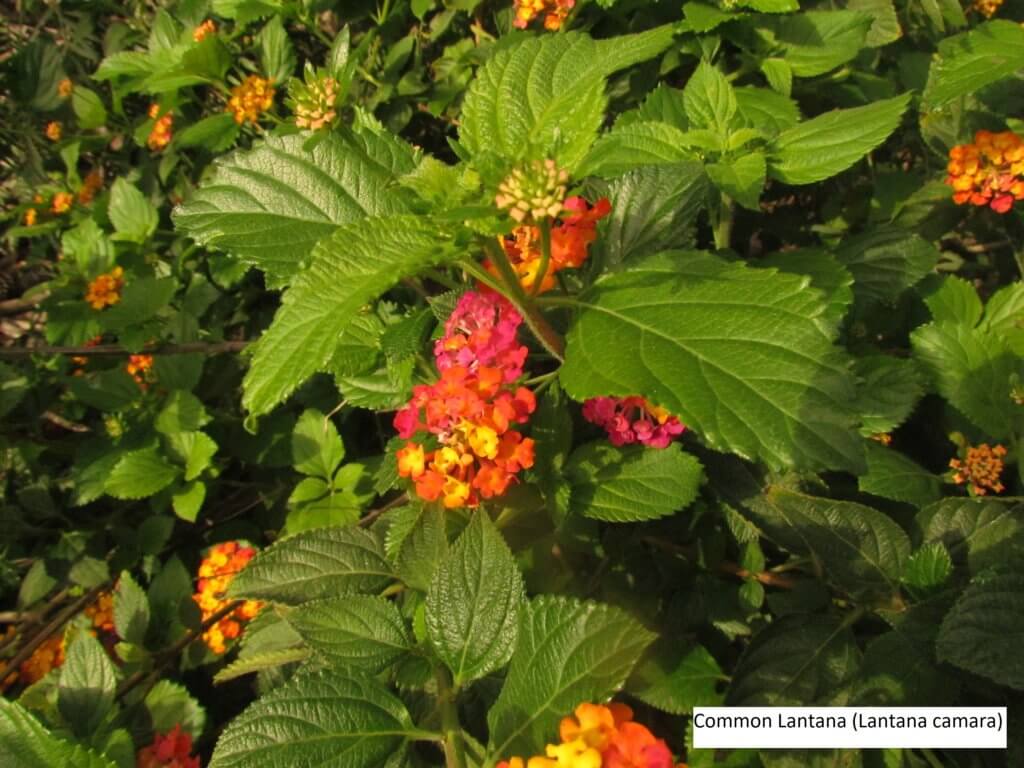
Let’s get cooking ! 
Chestnut and Strawberry tree Pudding
250 grs boiled and peeled chestnuts
4 eggs
400 ml milk
200 gr sugar
50 ml fire water (medronho)
30 grs corn flower
For the caramel:
150 grs sugar
60 ml water
Start with preparing the caramel, put the water in a pan with the sugar and cooked in low fire. Take it out as soon as it has a golden colour so it doesn’t over cook. Leak it inside of small forms of pudding and make sure it covers all the inside of the walls. On a bowl put the resto of the ingredients and grind them with the mixer until it is homogeneous. Pre heat the oven at 180 0 C. Put the small pudding forms on a oven plate and fill them with the mixture until half way. Let it bake for 40 minutes. 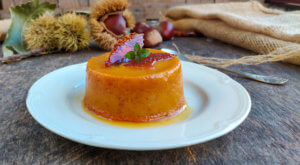
Take them out of the oven and let them cool for 30 minutes. Place them on the fridge until they cool down completely. Unmould them and serve it with decoration as you wish.

2020: a good year for translocated Raso Larks
Thanks to the rain that has fallen recently, this year at least 24 chicks have hatched on Santa Luzia island (Cape Verde) – a significant reinforcement for a species which in 2018 was confined only to the tiny Raso islet, and an excellent sign that the Raso Lark population which we moved to Santa Luzia over 2018 and 2019 is thriving.
Together with our colleagues from Biosfera1 Cabo Verde, we will continue to monitor these new arrivals which we hope will increase the species’ chance of survival.
More information here
Photos by Joana Bores/SPEA
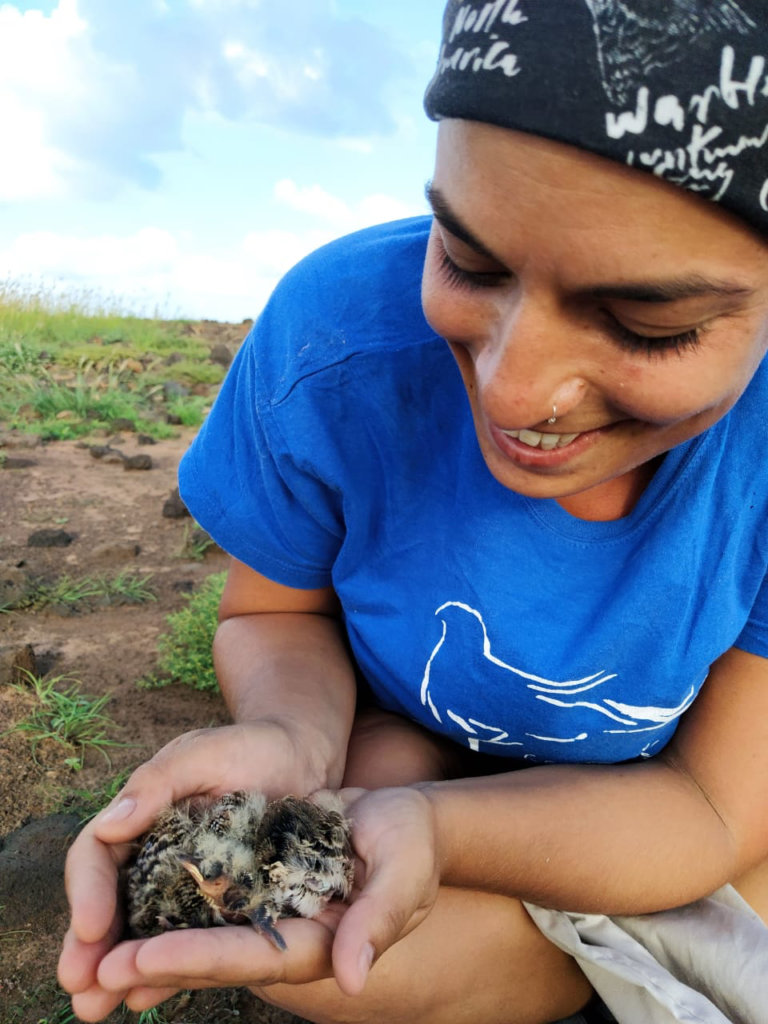
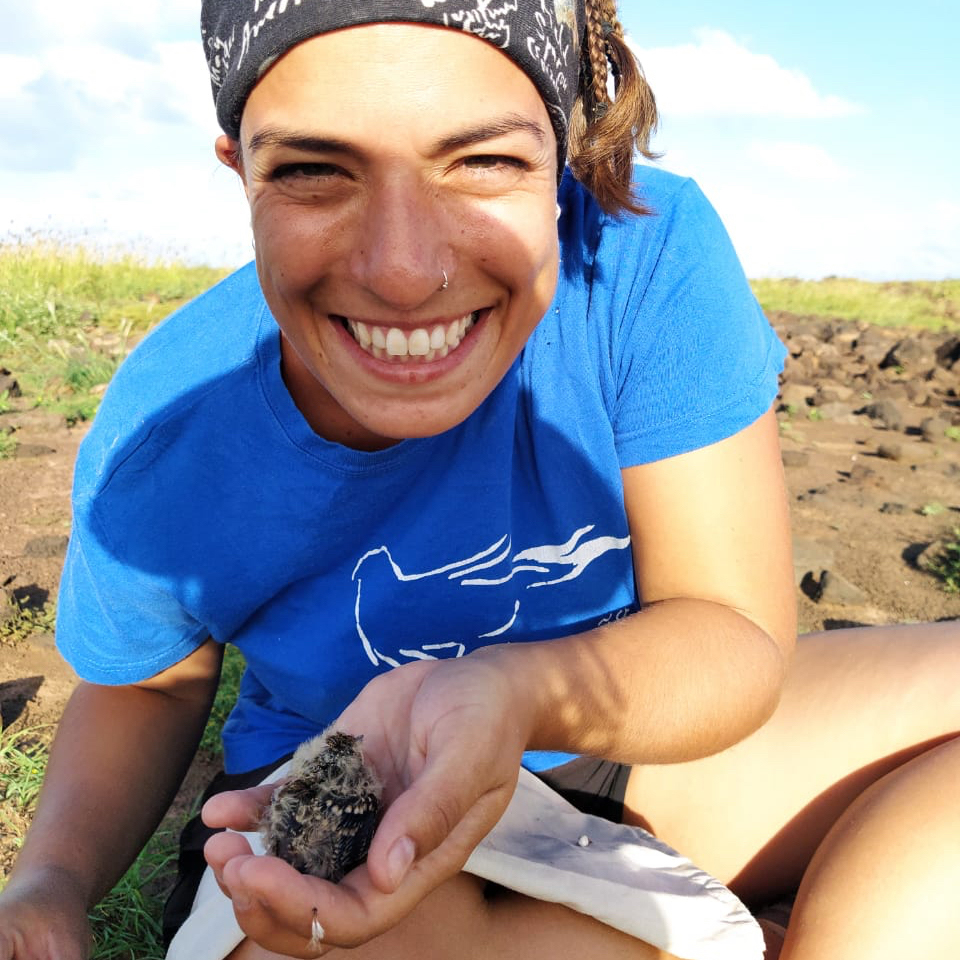
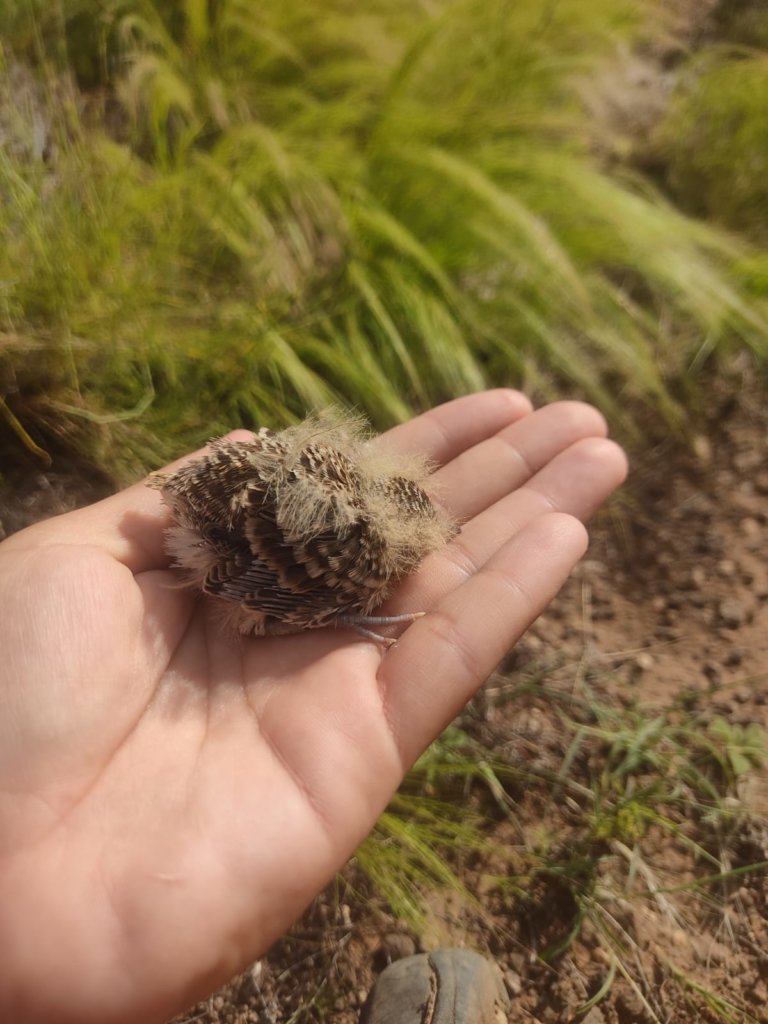
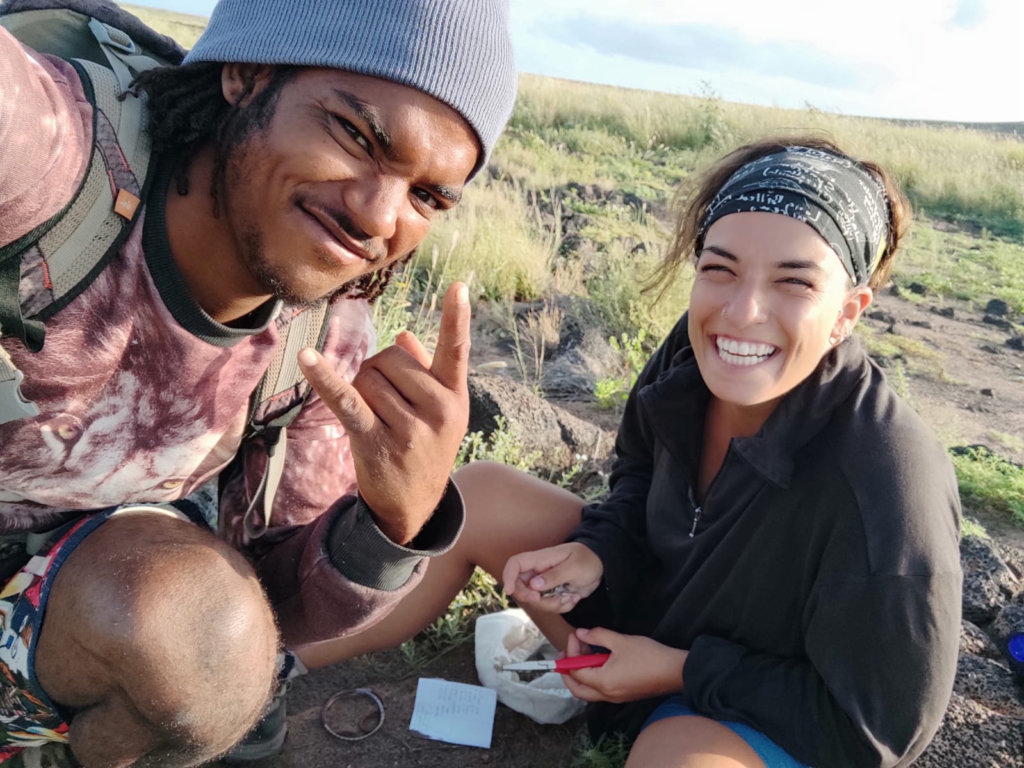

Check the website for dates for organised tours
Migration of soaring birds at Sagres, part 2
Some species just pass through the area and some of them show-up in big numbers. Black Kites (Milvus migrans) and Honey Buzzards (Pernis apivorus) are some of the first species to appear in the area. 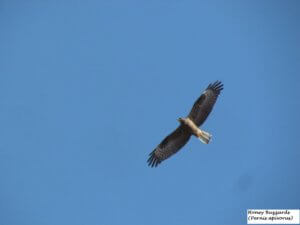 The Black Kite is present between 10th of July and mid-December with a peak between the 15th and 25th of August. The maximum recorded was 141 birds on the 2nd of September 2017. Honey Buzzard is present between mid-August and the end of October with a peak between the 15th and 20th of September. The highest numbers seen at Cabranosa were 50 birds on the 27th of September 2018. This species shows an incredible variation in plumage colors. Booted Eagles (Hieraaetus pennatus) and Sparrowhawk (Accipiter nisus) are recorded during the whole survey period. The both peak at the same period, around the 20th of September. The maximum recorded are however different: 420 Booted Eagles were seen on the 30th of September 2007 and 56 Sparrowhawks on the 6th of October 2013. The most numerous are definitely the Griffon Vultures with a maximum of 1800 on the 27th of November 2017. This species has been registered between the 1st of September and the end of November with a peak at the beginning of November.
The Black Kite is present between 10th of July and mid-December with a peak between the 15th and 25th of August. The maximum recorded was 141 birds on the 2nd of September 2017. Honey Buzzard is present between mid-August and the end of October with a peak between the 15th and 20th of September. The highest numbers seen at Cabranosa were 50 birds on the 27th of September 2018. This species shows an incredible variation in plumage colors. Booted Eagles (Hieraaetus pennatus) and Sparrowhawk (Accipiter nisus) are recorded during the whole survey period. The both peak at the same period, around the 20th of September. The maximum recorded are however different: 420 Booted Eagles were seen on the 30th of September 2007 and 56 Sparrowhawks on the 6th of October 2013. The most numerous are definitely the Griffon Vultures with a maximum of 1800 on the 27th of November 2017. This species has been registered between the 1st of September and the end of November with a peak at the beginning of November.
Among other migrants are 2 more species of vultures: the Cinereous Vulture (Aegypius monachus) and the Egyptian Vulture (Neophron percnopterus). The Cinereous Vulture appears between the 2nd of October and 10th of December with a peak around the 10th of November. The maximum registered were 4 birds on the 14th of November 2008. The Egyptian Vulture has been recorded during the whole survey period with a peak during the first half of September and a maximum of 17 birds counted on the 2nd of October 1990.
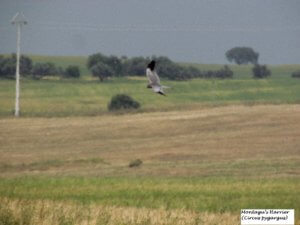 The Montagu’s Harriers (Circus pygargus) pass between mid-August and mid-October with a peak at the beginning of September. The maximum recorded were 8 birds on the 3rd of September 2019. Every year, melanistic birds appear in the area.
The Montagu’s Harriers (Circus pygargus) pass between mid-August and mid-October with a peak at the beginning of September. The maximum recorded were 8 birds on the 3rd of September 2019. Every year, melanistic birds appear in the area.
The Red Kite (Milvus milvus) passes between mid-September and mid-December with a peak around the 10th of November. On the 16th of October 2015, 27 Red Kites were recorded at Cabranosa, this is the record.
The Hobby (Falco subbuteo) is seen passing through the area and takes advantage of the swarms of dragonflies (Red-veined Darters mostly) to feed. It is recorded between mid-August and mid-November with a peak in mid-October. The maximum recorded were 3 birds on the 18th of October 2017.
Two species have a special status at Cabranosa. The Golden Eagle (Aquila chrysaetos), even though it is not a rare species in Portugal has only been recorded 4 times between the 20th of September and the 30th of October. The other one, more common, is the Eleonora’s Falcon (Falco eleonorae), a species breeding around the Mediterranean Sea and wintering in Madagascar! It is recorded between mid-August and the 10th of October with a peak in the last days of August. The maximum seen at Cabranosa were 3 birds on the 13th of September 2019.
Rarer species might also appear, alone or migrating with other species. The Rueppell’s Vulture (Gyps rueppellii) usually comes with Griffon Vultures and has been recorded between the 1st of October and mid-November every year but without any peak since numbers are low. The maximum seen were 2 birds on the 8th of November 2019. The Lesser Spotted Eagle (Clanga pomarina), not seen every year, usually appears between the 20th of September and 1st of December. No more than 1 individual of this species has been seen at a time but the maximum seen over an autumn was 4 birds. The Pallid Harrier (Circus macrourus) was seen for the 1st time in 2011 and has been annual since. It is present between the 20th of September and 20th of November and the maximum recorded were 2 birds at Cabranosa on the 24th of October 2018. The Red-footed Falcon (Falco vespertinus) was only recorded in 2014 when it was seen several days in September, between the 9th and the 18th. Two species were only seen once at Cabranosa: the Long-legged Buzzard (Buteo rufinus), on the 10th of October 2013 and the Lanner (Falco biarmicus) on the 7th of October 2017.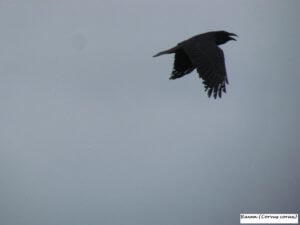
Finally, the Raven (Corvus corax) is present all year round without real peak and breeds in the area. Big groups can sometimes be seen during migration. On the 27th of September 2017, 46 birds were counted at Cabranosa.
Photos and text by Guillaume Réthoré
If you have any queries please do not hesitate to contact us:
friends.arpt@arocha.org
Our office is open from Monday to Wednesday from 9:00 to 12:00 am
Or visit us on our open day: Thursdays from 10:15 to 12:00 am
See map: https://arocha.pt/en/contact-us/
GPS coordinates
37°08’39.8″N (37.1444) 8°36’29.2″W (-8.6081)
(+351) 282 968 380
Thank you for supporting us!
Hope to see you soon!



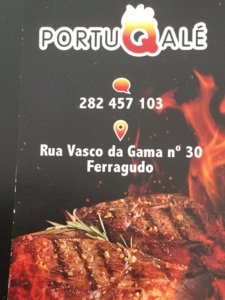

 It’s never too early to think about what you will give as a present to someone for their Birthday or for Christmas. What about Gifting a Friendship for the Friends of A Rocha Portugal?
It’s never too early to think about what you will give as a present to someone for their Birthday or for Christmas. What about Gifting a Friendship for the Friends of A Rocha Portugal?